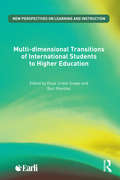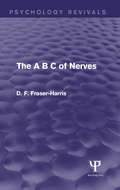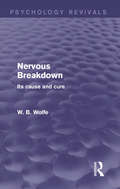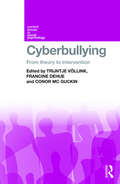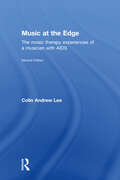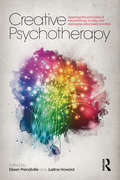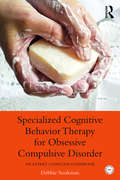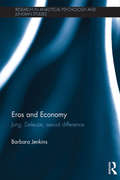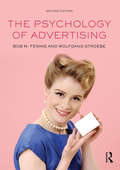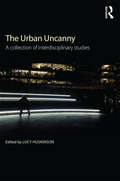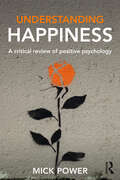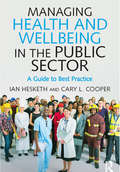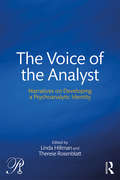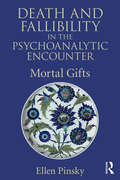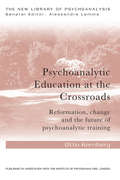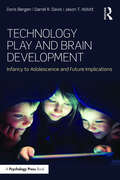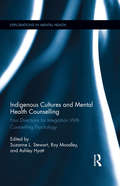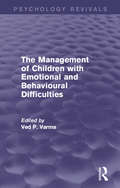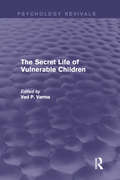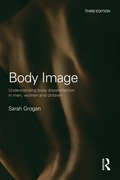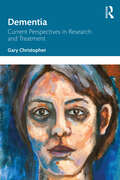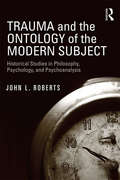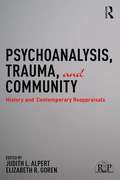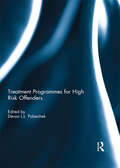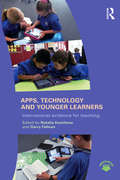- Table View
- List View
Multi-dimensional Transitions of International Students to Higher Education (New Perspectives on Learning and Instruction)
by Divya Jindal-Snape Bart RientiesInternational students experience multiple and multi-dimensional educational and life transitions: moving to a new country, moving to a new educational system and moving to higher educational degree programmes. Within these transitions, they experience differences in the social and organisational cultures, languages, and interpersonal expectations, realities and relationships. Their transitions also lead to, and interact with, transitions of professionals, home students and their families. Multi-dimensional Transitions of International Students to Higher Education provides up-to-date literature, research and theoretical constructs that underpin international students’ transitions to Higher Education. This book will help you to understand the opportunities, issues, social-emotional-psychological dimensions and evidence-based interventions that are vital to support an individual through these educational and life transitions. Split into four sections, topics include: Theoretical Underpinning Research in Different Contexts Impact of Educational Practice and Social Systems Interventions and Strategies Used to Enhance International Students’ Affective, Behavioural and Cognitive Transition Experiences This book is essential reading for professionals, students and policy makers and provides significant research insights to academics and researchers in the area of education, psychology and sociology.
The A B C of Nerves (Psychology Revivals)
by D.F. Fraser-HarrisOriginally published in 1928, the preface reads: "It is almost impossible to distinguish between what is ‘elementary’ and what is ‘advanced’ in regard to the nervous system. The constitution and functions of that system are so little matters of common knowledge that it would be safe to assume that practically nothing of its physiology is known to the ordinary reader. The selection of what is necessary to be known and likely to be comprehended by readers who have no previous knowledge of anatomy and physiology is, therefore, no easy task. It is certain that in the opinion of some authorities much has been omitted that should have been included; one can but say in self-defence that to have included more than is here considered would have exceeded the limits of a treatise whose title is the A B C." Today it can be read and enjoyed in its historical context.
Nervous Breakdown: Its Cause and Cure (Psychology Revivals)
by W. B. WolfeOriginally published in 1934, excerpts from the original preface read: "A Nervous breakdown is a terrifying experience. When it occurs, the patient, his family, and often his friends are panic-stricken. No one knows just what to do with the patient, and the patient is incapable of helping himself. … What should be done? If you think you have a nervous breakdown, it is your first duty to consult a competent and reputable physician, preferably your family doctor, and get a thorough and complete physical examination. If you cannot find any evidence of physical or organic disease, ask your doctor to recommend a reputable psychiatrist or medical psychologist. …This is a compact manual of help and self-help." Today this book can be read and enjoyed in its historical context.
Cyberbullying: From Theory to Intervention (Bullying And Victimization Ser.)
by Trijntje Völlink Francine Dehue Conor GuckinThe study of cyberbullying has exploded since its first appearance in a peer-reviewed journal article in 2005. Cyberbullying: From theory to intervention aims to make clear and practical sense of this proliferation of coverage by defining the problem of cyberbullying and examining its unique features. The volume provides a thorough overview of state-of-the-art research into the phenomenon, and discusses the development and evaluation of interventions to prevent and combat it. Whereas most research papers offer limited space to describe actual intervention methods, this book provides tremendous insight into the different theoretical methods and practical strategies available to combat cyberbullying. Part One provides readers with a critical review of the existing research literature and collects insights from international researchers involved in bullying and cyberbullying research, tackling key questions such as: how is cyberbullying defined, what is the overlap with traditional bullying, and what are the negative consequences of cyberbullying? Part Two gives an overview of the development and content of evidence-based ICT interventions aimed at preventing and combating bullying and cyberbullying. In addition, some of the important outcomes of the effect evaluations will be described. The book's final chapter integrates the information from Part One with advice regarding practical applications from Part Two. Cyberbullying: From theory to intervention is essential reading for academics and researchers concerned with both cyberbullying and traditional bullying. It can be used in graduate seminars or advanced undergraduate courses in cyberbullying and will also be of interest to teachers, field experts and organisations involved and disseminating cyberbullying solutions.
Music at the Edge: The Music Therapy Experiences of a Musician with AIDS
by Colin Lee Colin Andrew LeeMusic at the Edge invites the reader to experience a complete music therapy journey through the words and music of the client, and the therapist’s reflections. Francis, a musician living with AIDS, challenged Colin Andrew Lee, the music therapist, to help clarify his feelings about living and dying. The relationship that developed between them enabled Francis the opportunity to reconsider the meaning of his life and subsequent physical decline, within a musical context. First published in 1996, Music at the Edge is a unique and compelling music therapy case study. In this new edition of the highly successful book, Colin retains the force of the original text through the lens of contemporary music therapy theory. This edition also includes more detailed narrative responses from the author and his role as a therapist and gay man. Central to the book are the audio examples from the sessions themselves. The improvisations Francis played and his insightful verbal explorations provide an extraordinary glimpse into the therapeutic process when working in palliative and end-of-life care. This illuminating book offers therapists, musicians, related professionals and those working with, or facing, illness and death a unique glimpse into the transcendent powers of music. It is also relevant to anyone interested in the creative account of a pianist’s discovery of life and death through music.
Creative Psychotherapy: Applying the principles of neurobiology to play and expressive arts-based practice
by Eileen Prendiville and Justine HowardCreative Psychotherapy brings together the expertise of leading authors and clinicians from around the world to synthesise what we understand about how the brain develops, the neurological impact of trauma and the development of play. The authors explain how to use this information to plan developmentally appropriate interventions and guide creative counselling across the lifespan. The book includes a theoretical rationale for various creative media associated with particular stages of neural development, and examines how creative approaches can be used with all client groups suffering from trauma. Using case studies and exemplar intervention plans, the book presents ways in which creative activities can be used sequentially to support healing and development in young children, adolescents and adults. Creative Psychotherapy will be of interest to mental health professionals working with children, adolescents and adults, including play and arts therapists, counsellors, family therapists, psychologists, social workers, psychiatrists and teachers. It will also be a valuable resource for clinically oriented postgraduate students, and therapists who work with victims of interpersonal trauma.
Specialized Cognitive Behavior Therapy for Obsessive Compulsive Disorder: An Expert Clinician Guidebook (Practical Clinical Guidebooks)
by Debbie SookmanSpecialized Cognitive Behavior Therapy for Obsessive Compulsive Disorder is an expert clinician guide for administration of evidence-based specialized cognitive behavior therapy (CBT) for obsessive compulsive disorder and its subtypes. This book focuses on strategies to identify and resolve complex and varied reasons for resistance to CBT and to optimize symptom remission, generalize improvement, and forestall relapse during treatment for OCD. The interventions discussed build upon and elaborate the clinical and research work of other OCD experts, clinicians and researchers in the field of cognitive therapy, and are based on the author’s own research and clinical experience as an internationally known expert treating thousands of OCD patients. Criteria are outlined for symptom recovery and for treatment resistance in the context of optimal evidence-based specialized CBT delivery. Featuring treatment models and illustrative case studies, this book is a necessary addition to the library of mental health professionals who work with patients suffering from OCD.
Eros and Economy: Jung, Deleuze, Sexual Difference (Research in Analytical Psychology and Jungian Studies)
by Barbara JenkinsEros and Economy: Jung, Deleuze, Sexual Difference explores the possibility that social relations between things, partially inscribed in their aesthetics, offer important insights into collective political-economic relations of domination and desire. Drawing on the analytical psychology of Carl Jung and the philosophy of Gilles Deleuze, this book focuses on the idea that desire or libido, overlaid by sexual difference, is a driving force behind the material manifestations of cultural production in practices as diverse as art or economy. Re-reading the history of capitalism and aesthetics with an awareness of the forces of sexual difference reveals not just their integral role in the development of capitalist markets, but a new understanding of our political-economic relations as humans. The appearance of the energies of sexual difference is highlighted in a number of different historical periods and political economies, from the Rococo period of pre-revolutionary France, to the aesthetics and economics of Keynesian Bloomsbury, to our contemporary Postmodern sensibility. With these examples, Jenkins demonstrates that the very constitution of capitalist markets is affected by the interaction of these forces; and she argues that a conscious appreciation and negotiation of them is integral to an immanent, democratic understanding of power. With its unique application of Jungian theory, this book provides important new insights into debates surrounding art, aesthetics, and identity politics, as well as into the quest for autonomous, democratic institutions of politics and economics. As such, this book will appeal to researchers, academics and postgraduate students in the fields of Jung, psychoanalysis, political economy, cultural studies and gender studies, as well as those interested in the field of cultural economy.
The Psychology of Advertising
by Bob M. Fennis Wolfgang StroebeAdvertising is a ubiquitous and powerful force, seducing us into buying wanted and sometimes unwanted products and services, donating to charitable causes, voting for political candidates, and changing our health-related lifestyles for better or worse. The impact of advertising is often subtle and implicit, but sometimes blatant and impossible to overlook. This revised and fully updated new edition of The Psychology of Advertising offers a comprehensive and state-of-the-art overview of the psychological findings on the impact of advertising, and discusses the research in the context of recent developments in the fields of social and consumer psychology. Key questions covered in the volume include: What impact does advertising have on consumer behavior? What causes this impact? What are the psychological processes responsible for the effectiveness of advertising? How do consumers make sense of advertising messages? Which messages "get across" successfully and when, and why? How do new online and digital technologies affect consumer judgement and choice? Engagingly written, and including a comprehensive glossary of frequently used concepts, The Psychology of Advertising is a unique and invaluable resource for advanced undergraduate and graduate students, and for researchers and lecturers in social psychology, marketing, and communications. It is also a valuable guide for professionals working in advertising, public health, public services and political communication.
The Urban Uncanny: A collection of interdisciplinary studies
by Lucy HuskinsonThe Urban Uncanny explores through ten engaging essays the slippage or mismatch between our expectations of the city—as the organised and familiar environments in which citizens live, work, and go about their lives—and the often surprising and unsettling experiences it evokes. The city is uncanny when it reveals itself in new and unexpected light; when its streets, buildings, and people suddenly appear strange, out of place, and not quite right. Bringing together a variety of approaches, including psychoanalysis, historical and contemporary case study of cities, urban geography, film and literary critique, the essays explore some of the unsettling mismatches between city and citizen in order to make sense of each, and to gauge the wellbeing of city life more generally. Essays examine a number of cities, including Edmonton, London, Paris, Oxford, Las Vegas, Berlin and New York, and address a range of issues, including those of memory, death, anxiety, alienation, and identity. Delving into the complex repercussions of contemporary mass urban development, The Urban Uncanny opens up the pathological side of cities, both real and imaginary. This interdisciplinary collection provides unparalleled insights into the urban uncanny that will be of interest to academics and students of urban studies, urban geography, psychoanalysis, cultural studies, social studies and film studies, and to anyone interested in the darker side of city life.
Understanding Happiness: A critical review of positive psychology
by Mick PowerWe all want to be happy, and there are plenty of people telling us how it can be achieved. The positive psychology movement, indeed, has established happiness as a scientific concept within everyone's grasp. But is happiness really something we can actively aim for, or is it simply a by-product of how we live our lives more widely? Dr. Mick Power, Professor of Clinical Psychology and Director of Clinical Programmes at the National University of Singapore, provides a critical assessment of what happiness really means, and the evidence for how it can be increased. Arguing that negative emotions are as important to overall well-being as the sunnier sides of our disposition, the book examines many of the claims of the positive psychology movement, including the relationship between happiness and physical health, and argues that resilience, adaptability in the face of adversity, psychological flexibility, and a sense of generativity and creativity are far more achievable as life goals. This is a book which will fascinate anyone interested in positive psychology, or anyone who has ever questioned the plethora of publications suggesting that blissful happiness is ten easy steps away.
Managing Health and Wellbeing in the Public Sector: A Guide to Best Practice
by Cary L. Cooper Ian HeskethAs governments throughout the world experience increasing fiscal challenges, the pressures on public sectors to streamline services and harness technological advances is unprecedented. Many have undergone huge budgetary cuts as a result, but what are the effects of this intense organisational change on such a large and varied workforce? And how can managers within the public sector meet the challenge of delivering services whilst maintaining the health and wellbeing of staff tasked with carrying out the work? Managing Health and WellBeing in the Public Sector: A Guide to Best Practice is the ideal companion to any manager in these challenging times. Exploring the realities of working in the public sector, and those factors which can add meaning and purpose to working life, the book provides managers with a practical toolkit for creating the best working environment, as well as nurturing resilience and motivation within their staff. Written by two authors with a lifetime of experience in the field, the book also examines why promoting occupational health and wellbeing is beneficial to organizations, drawing on a wealth of international research to support this argument. It concludes with a series of case studies in which an international range of public sector managers discuss initiatives they have implemented, and how successful they have been. This is the ideal companion for any manager working in the public sector. It will also be instructive reading for students or researchers of occupational or organizational psychology, as well as HRM.
The Voice of the Analyst: Narratives on Developing a Psychoanalytic Identity (Psychoanalysis in a New Key Book Series)
by Linda Hillman Therese RosenblattThe Voice of the Analyst contains personal narratives by twelve psychoanalysts, each taking the reader through his or her unique path toward developing a voice and identity as an analyst. All come from different backgrounds, theoretical orientations and stages of their careers. The narratives are courageous and uncommonly revealing in a profession that demands so much reserve and anonymity from its practitioners. This book demonstrates that the analyst’s work is a product of their characters as well as training and theory. The narrative form in this book offers a refreshing and necessary companion to the theoretical and clinical writing that dominates the field. The editors show the importance of developing a unique voice and identity if one is to function well as an analyst. This endeavor cannot be accomplished solely through technical training, especially with the isolation that characterizes clinical practice. There are pressures that analysts experience alone in their practice, from patients and themselves as well as other professionals, forces that render technical training and theory alone inadequate in facilitating the development of one’s analytic voice and identity. Enter the form of the personal narrative presented in this book. This fascinating compilation of narratives shows how the contributors bear striking similarities and differences to one another. Despite their different backgrounds, they display commonality in their sensitivity towards mental and emotional states and their wish to heal suffering. However, they also exemplify wide differences in motivations, interests and what makes them tick as psychoanalysts. The Voice of the Analyst will be a great companion book for established psychoanalysts and psychoanalytic psychotherapists and those in training, as well as mental health professionals keen to understand what it takes to become a psychoanalyst and to enhance their personal and professional development.
Death and Fallibility in the Psychoanalytic Encounter: Mortal Gifts
by Ellen PinskyDeath and Fallibility in the Psychoanalytic Encounter considers psychoanalysis from a fresh perspective: the therapist’s mortality—in at least two senses of the word. That the therapist can die, and is also fallible, can be seen as necessary or even defining components of the therapeutic process. At every moment, the analyst's vulnerability and human limitations underlie the work, something rarely openly acknowledged. Freud’s central insights continue to guide the range of all talking therapies, but they do so somewhat in the manner of a smudged ancestral map. That blur, or degree of confusion, invites new ways of reading. Ellen Pinsky reexamines fundamental principles underlying by-now-dusty terms such as "neutrality," "abstinence," "working through," and the peculiar expression "termination." Pinsky reconsiders—in some measure, hopes to restore—the most essential, humane, and useful components of the original psychoanalytic perspective, guided by the most productive threads in the discipline's still-evolving theory. Freud's most important contribution was arguably to discover (or invent) the psychoanalytic situation itself. This book reflects on central questions pertaining to that extraordinary discovery: What is the psychoanalytic situation? How does it work (and fail to work)? Why does it work?? This book aims to articulate what is fundamental and what we can't do without—the psychoanalytic essence—while neither idealizing Freud nor devaluing his achievement. Historically, Freud has been misread, distorted, maligned or, at times, even dismissed. Pinsky reappraises his significance with respect to psychoanalytic writers who have extended, and amended, his thinking. Of particular interest are those psychoanalytic thinkers who, like Freud, are not only original thinkers but also great writers—including D. W. Winnicott and Hans Loewald.? Covering a broad range of psychoanalytic paradigms, Death and Fallibility in the Psychoanalytic Encounter will bring a fresh understanding of the nature, benefits and pitfalls of psychoanalysis. It will appeal to psychoanalysts and psychoanalytic psychotherapists and provide superb background and inspiration for anyone working across the entire range of talking therapies.
Psychoanalytic Education at the Crossroads: Reformation, change and the future of psychoanalytic training (The New Library of Psychoanalysis)
by Otto Friedmann KernbergTraining in psychoanalysis is a long and demanding process. However, the quality of education available is hugely variable across the world. The structure of psychoanalytic education, centered on the hierarchical "training analysis" system, reflected a concerted effort to maintain a stable and high quality educational process. However, throughout time this system has become a major source of institutional contradictions that affect the training of candidates, the scientific developments within psychoanalysis, and the nexus of psychoanalytic theory and practice with the surrounding scientific, social and cultural world. Psychoanalytic Education at the Crossroads examines the ways in which group processes, the hierarchal culture in institutes, the influence of individual personalities, the lack of research and the faults in supervision can all stifle creativity and hinder candidates’ progress. In this compelling work, Otto Kernberg sets out clear suggestions for how these issues can be addressed, and how he sees the future of psychoanalytic education across all psychoanalytic settings and schools of thought. The first part of this volume is focused primarily on the analysis of the nature of these problems and their effects on the personal analysis and supervision of candidates; on theoretical and clinical seminars; on selection, progression, and graduation; on educational principles and requirements, developments of theory and technique and, in particular, limitation versus expansion of the realm of interests and applications of psychoanalysis. The second part of this volume deals with proposals of solutions to the problems encountered, and major suggestions for innovation in psychoanalytic education. The author’s work in this area has been hugely influential. Kernberg has made a substantive difference in the development of psychoanalytic institutes and education, and continues to do so. Psychoanalytic Education at the Crossroads will be essential reading to anyone involved in psychoanalytic education, whether as a psychoanalyst, psychoanalytic psychotherapist, trainee, trainer, or supervisor.
Technology Play and Brain Development: Infancy to Adolescence and Future Implications
by Doris Bergen Darrel R. Davis Jason T. AbbittTechnology Play and Brain Development brings together current research on play development, learning technology, and brain development. The authors first navigate the play technology and brain development interface, highlighting the interactive qualities that make up each component. Next, they survey the changes in play materials and the variations in time periods for play that have occurred over the past 15-20 years, and then explain how these changes have had the potential to affect this play/brain developmental interaction. The authors also cover various types of technology-augmented play materials used by children at age levels from infancy to adolescence, and describe the particular qualities that may enhance or change brain development. In so doing, they present information on previous and current studies of the play and technology interface, in addition to providing behavioral data collected from parents and children of varied ages related to their play with different types of play materials. Significantly, they discuss how such play may affect social, emotional, moral, and cognitive development, and review futurist predictions about the potential qualities of human behavior needed by generations to come. The authors conclude with advice to toy and game designers, parents, educators, and the wider community on ways to enhance the quality of technology-augmented play experiences so that play will continue to promote the development of human characteristics needed in the future.
Indigenous Cultures and Mental Health Counselling: Four Directions for Integration with Counselling Psychology (Explorations in Mental Health #16)
by Roy Moodley Suzanne L. Stewart Ashley HyattNorth America’s Indigenous population is a vulnerable group, with specific psychological and healing needs that are not widely met in the mental health care system. Indigenous peoples face certain historical, cultural-linguistic and socioeconomic barriers to mental health care access that government, health care organizations and social agencies must work to overcome. This volume examines ways Indigenous healing practices can complement Western psychological service to meet the needs of Indigenous peoples through traditional cultural concepts. Bringing together leading experts in the fields of Aboriginal mental health and psychology, it provides data and models of Indigenous cultural practices in psychology that are successful with Indigenous peoples. It considers Indigenous epistemologies in applied psychology and research methodology, and informs government policy on mental health service for these populations.
The Management of Children with Emotional and Behavioural Difficulties (Psychology Revivals)
by Ved P. VarmaThe management of children with emotional and behavioural difficulties has always been a source of worry and concern to those who have to deal with them. Many such children are unpredictable, sometimes embarrassing, and can often make us feel helpless. We need to know more about them, and why they think, feel, and behave as they do. Originally published in 1990, the contributors to this volume bring a wide-ranging professional, practical approach to the problem, looking at it from the perspectives of psychiatry, psychology, psychotherapy, education, and social work. They underline the fact that such behaviour cannot be assessed in isolation from the context in which it occurs, and go beyond a mere description of maladjusted children to ask, ‘Maladjusted to what? And under what conditions?’ The social and family context is continually borne in mind. The book will still be of great interest to psychologists, psychiatrists, psychotherapists, teachers and social workers, as well as to students in those disciplines, who will find it an invaluable source to help them in their first encounters with child patients, clients and pupils.
The Secret Life of Vulnerable Children (Psychology Revivals)
by Ved P. VarmaHow do disturbed children see the world? How can we understand their difficulties? Most children have secret worlds but for some these worlds contain secrets that are both permanent and damaging. Originally published in 1992, this moving account of the secret lives of such vulnerable and disturbed children will enable professionals working with these children to find out what is going on in their minds – what they are thinking, what they are feeling, why they behave as they do. The contributors, all experts in their field at the time, show how vulnerable children can be assessed and how they can be helped most effectively.
Body Image: Understanding Body Dissatisfaction in Men, Women and Children
by Sarah GroganBody Image provides a comprehensive summary of research on body image in men, women, and children drawing together research findings from the fields of psychology, sociology, clothing, and gender studies. This third edition has been thoroughly revised and updated to reflect the significant increase in research on body image since the previous edition, as well as the significant cultural changes in how men’s and women’s bodies are viewed. Data are also included from interviews and focus groups with men, women, and children who have spoken about their experiences of body image and body dissatisfaction, producing a comprehensive understanding of how men and women construct and understand their bodies in the twenty-first century. The only sole-authored text to provide a comprehensive view of body image research, focusing on men, women, and children, Body Image will be invaluable to students and researchers, as well as practitioners with an interest in body image and how to reduce body dissatisfaction.
Dementia: Current Perspectives in Research and Treatment
by Gary ChristopherThis book explores how our conception of dementia has changed since its initial discovery, taking in advancements in knowledge that translate into better ways to manage the condition. Providing detailed reports of the latest research, the book explores the myriad forms of dementia. Written in accessible language, it looks at current methods of assessing and diagnosing the condition before turning to contemporary approaches to treatment. Chapters dedicated to often overlooked issues include raising awareness about how dementia affects the lives of those with an intellectual developmental disorder, the fundamental need to consider cultural differences, and the need to fully acknowledge and support informal carers. The final section of the text examines how COVID-19 has spotlighted serious gaps in healthcare for those living with dementia. Fortified with straightforward explanations and references to clinical material throughout, the book is essential reading not only for clinical psychologists in training and those in practice seeking an overview of the field and latest developments, but for a broader audience as well.
Trauma and the Ontology of the Modern Subject: Historical Studies in Philosophy, Psychology, and Psychoanalysis
by John L. RobertsRecent scholarship has inquired into the socio-historical, discursive genesis of trauma. Trauma and the Ontology of the Modern Subject, however, seeks what has not been actualized in trauma studies – that is, how the necessity and unassailable intensity of trauma is fastened to its historical emergence. We must ask not only what trauma means for the individual person’s biography, but also what it means to be the historical subject of trauma. In other words, how does being human in this current period of history implicate one’s lived possibilities that are threatened, and perhaps framed, through trauma? Foucauldian sensibilities inform a critical and structural analysis that is hermeneutically grounded. Drawing on the history of ideas and on Lacan’s work in particular, John L. Roberts argues that what we mean by trauma has developed over time, and that it is intimately tied with an ontology of the subject; that is to say, what it is to be, and means to be human. He argues that modern subjectivity – as articulated by Heidegger, Levinas, and Lacan – is structurally traumatic, founded in its finitude as self-withdrawal in time, its temporal self-absence becoming the very conditions for agency, truth and knowledge. The book also argues that this fractured temporal horizon – as an effect of an interrupting Otherness or alterity – is obscured through the discourses and technologies of the psy-disciplines (psychiatry, psychology, and psychotherapy). Consideration is given to social, political, and economic consequences of this concealment. Trauma and the Ontology of the Modern Subject will be of enduring interest to psychoanalysts and psychotherapists as well as scholars of philosophy and cultural studies.
Psychoanalysis, Trauma, and Community: History and Contemporary Reappraisals (Relational Perspectives Book Series)
by Judith L. Alpert Elizabeth R. GorenTrauma is one of the hottest contemporary topics within psychoanalysis, whilst many psychoanalysts are increasingly interested in applying their skills outside the traditional setting of the consulting room, especially in response to disasters, wars and serious social issues. Psychoanalysis, Trauma, and Community seeks to correct the misconceptions of what analysts do and how they do it and debunk the stereotype of psychoanalysts stuck in their offices plying their wares on the worried well. <P><P>Bringing together a group of eminent contributors, this volume considers how psychoanalysis may best be expanded to help in social and community settings, to understand these wider issues from a psychoanalytic perspective, and provide clear clinical guidance and clinical examples of how best to work in a wide variety of non-traditional ways. The innovative work featured includes taking testimony, in-situ interviewing, documentary film-making, social activism, ethnic and political conflict mediation, on-site workshops as well as direct clinical interventions. The reader is taken from the Holocaust, Hiroshima and the Vietnam War to the Balkan Wars and Palestinian-Israeli conflict, from the political violence of the disappeared in Argentina to the devastation wrought by Hurricane Katrina, and from chronic conditions of poverty in India to racism in the post-Jim Crow South. <P><P>Psychoanalysis, Trauma, and Community will appeal to psychoanalysts, psychoanalytic psychotherapists and anyone studying on the increasing number of trauma courses being given today in universities. Lay readers with an interest in the traumatic fallout as a result of chronic conditions or the myriad disasters that occur globally will find this book illuminating. For the non-specialist mental health professional, including non-analytic psychotherapists, social workers and others who work in the community, this book offers concrete advice on dealing with intervention issues such as entry and integration, as well as on management of multiple and complex trauma in a non-clinical setting.
Treatment programmes for high risk offenders
by Devon L.L. PolaschekHigh risk offenders can have a disproportionate impact on their communities because, despite all manner of sentencing options, they continue to commit a wide range of crimes, both minor and serious. It is tempting to throw the book at them, sometimes even to throw away the key. However, anything that helps offenders to change their propensity for re-offending can really make a difference. Over the last 30 years, scientific research has guided the provision of treatment, rehabilitation and reintegration services that lead to reductions in re-offending. Much of what we know, however, comes from work with medium-risk offenders. Although this work is important and valuable, there is a lower level of complexity to working with medium-risk offenders than most high-risk offenders require. This book recognizes the need to research and develop different approaches to rehabilitating high-risk offenders. Each of the contributions takes a different approach, with a different group of offenders, in a different setting. Cumulatively, the chapters provide encouragement for those working with high risk offenders, along with a wide range of ideas about how to develop better services.This book was originally published as a special issue of Psychology, Crime & Law.
Apps, Technology and Younger Learners: International evidence for teaching
by Natalia Kucirkova Garry FalloonThis book provides an in-depth analysis of the challenges, potential and theoretical possibilities of apps and considers the processes of change for education and home learning environments. Drawing together a diverse team of international contributors, it addresses the specific features, context of use and content of apps to uncover the importance of these tools for young children’s learning. Apps, Technology and Younger Learners focuses on ways that apps support early years and primary school learning, connect various learning spaces and engage children in a range of edutainment and knowledge-building activities. In each chapter, the current state of knowledge and key research questions in the field for future study are identified, with clear messages provided at the end of each chapter. Focusing on empirical studies and strong theoretical frameworks, this book covers four key parts: Understanding the learning potential of children’s apps; Key app challenges; Empirical evidence; Future avenues. This book is an essential guide for educators, post-graduate students, researchers and all those interested in the advantages or challenges that may result from integrating apps into early education.
